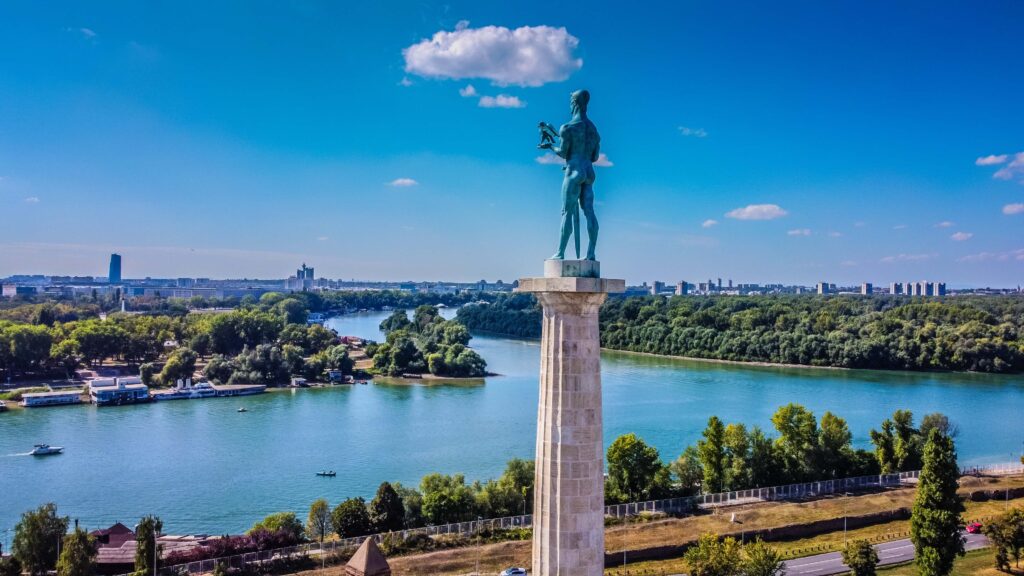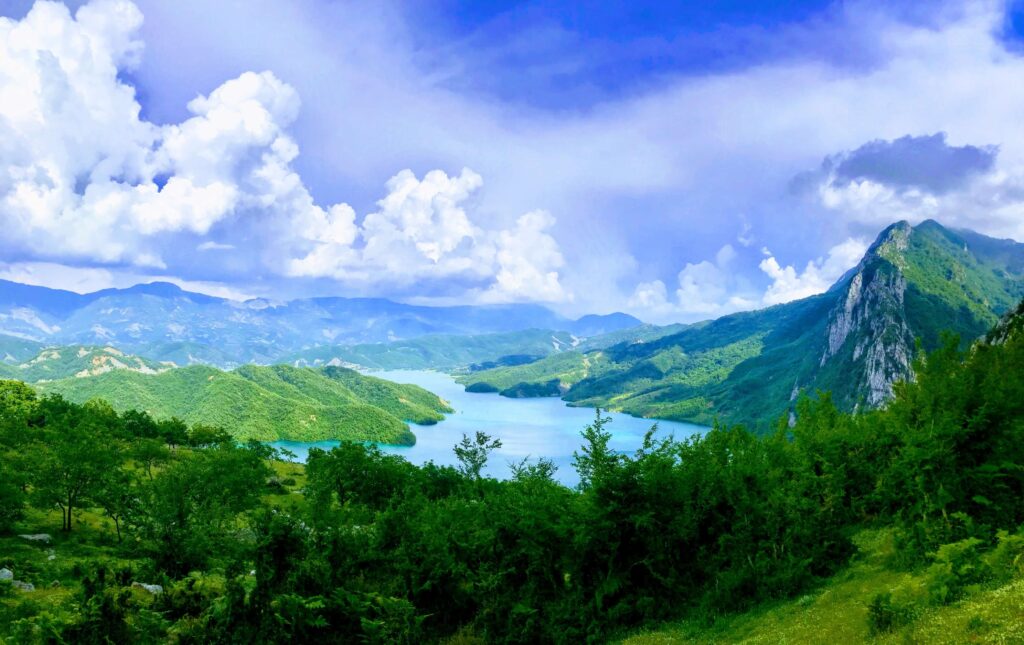Winter is one of the most popular times to visit Iceland, and for good reason. The island is one of the best places to see the Northern Lights, and offers a range of incredible outdoor activities best suited to the cold season. Keep reading for the top Iceland winter activities, but be warned; don’t blame us if you suddenly decide to spend your savings on booking a trip!
*This post contains affiliate links, which are included to provide easy access to products or services we genuinely recommend. We may make a small commission if you make a purchase or booking through one of these links. This comes at no extra cost to you, but helps to sustain our site and create more valuable content.*
Hot Springs
Winter is the perfect time to warm up by taking a dip in a hot spring- especially if you’re visiting Iceland, where temperatures dip below zero degrees (celsius). The geothermal activity beneath the island heats numerous springs, providing a natural spa experience.
Among the most famous is the Blue Lagoon, with its milky-blue waters and therapeutic properties. You can find plenty of useful information in our article Planning a Day Trip to the Iceland Blue Lagoon from Reykjavík.
Another gem is Reykjadalur Hot Springs, a series of bathing pools in the Reykjadalur Valley that can be reached by hiking or swimming along a thermal river. For a more secluded experience, Hvammsvík Hot Springs allows you to enjoy eight different natural pools by the ocean’s edge.
The Blue Lagoon, Reykjadalur and Hvammsvík Hot Springs are all located around an hour from the Icelandic capital Reykjavík. However, there is a closer, more convenient option: the famous Sky Lagoon. Located around fifteen minutes from central Reykjavík, the Sky Lagoon offers modern facilities and breathtaking ocean views.
Iceland’s hot springs are not only a testament to the country’s volcanic activity, but also serve as cosy retreats from the winter chill, making them a must-visit for anyone seeking a steamy sanctuary amidst the frosty landscapes.
Northern Lights Tours
We couldn’t write an article on Iceland winter activities without mentioning the Northern Lights. Northern Lights tours in Iceland are a magical experience, offering visitors the chance to witness the breathtaking Aurora Borealis.
The tours are most popular from September to April when the nights are longest, providing the best opportunity to see the lights. Your best chance is in December/January, but this is also one of the most expensive times to visit Iceland!
Options range from bus tours departing from Reykjavík, which offer a comfortable way to chase the lights, to boat tours that provide a unique perspective from the water. For a more adventurous experience, super jeep tours with a photographer guide are available, allowing for more flexibility to find the perfect spot away from light pollution.
Certain tour operators offer a second trip for free if the lights aren’t visible on the first attempt, ensuring visitors the best chance to witness this natural wonder. However, check before booking if this option is available for you chosen tour. You don’t want to miss the lights and then face the prospect of paying full price for a second tour!
Snowmobiling
Snowmobiling in Iceland is an exhilarating activity that allows you to traverse the country’s stunning glacial landscapes at high speeds. It’s particularly popular during the winter months when the snow conditions are ideal. Langjökull Glacier, the second largest glacier in Iceland, is a top location for snowmobiling, offering vast expanses of snow and ice to explore.
Plenty of companies provide snowmobiling tours in Iceland, which often include transfers from nearby attractions such as Gullfoss Waterfall. These tours cater to all levels of experience and include all the necessary equipment (including the snowmobiles themselves obviously).
Ice Caving
Ice caving in Iceland offers a mesmerising subterranean adventure, particularly during the winter months. Winter is when the caves are most stable and accessible, and therefore the best time to explore them. These natural wonders, sculpted within Iceland’s massive glaciers, reveal a world of stunning blue ice formations and crystal-clear chambers.
The most famous ice caves are found in the Vatnajökull Glacier, Europe’s largest glacier. To visit, adventurers typically start from Jökulsárlón Glacier Lagoon and are transported via superjeep, making the journey part of the experience.
As well as to fully appreciate the caves’ beauty, guided tours are essential for safety reasons. Experienced guides provide expertise and equipment, in addition to offering information on the fascinating geological history behind these icy marvels.
Glacier Tours
Glacier tours in Iceland are an exhilarating way to experience the country’s stunning icy landscapes. These tours allow you to hike, climb, and explore some of the most breathtaking glaciers in the world, such as Vatnajökull, Sólheimajökull, and Langjökull.
Winter is the perfect season for these adventures, offering the safest conditions and most beautiful ice formations. You can embark on a variety of tours, from easy walks to challenging climbs. Glacier tours also often include activities like ice-caving and snowmobiling.
It’s also possible to see some of Iceland’s glaciers from above. Eyjafjallajökull, Mýrdalsjökull, Tindfjallajökull, and Thórisjökull can all be viewed from a helicopter. Meanwhile, the Falljökull glacier can be reached via boat journey across the Fjallsárlón glacial lagoon.
Most tours are accessible from major tourist spots like Reykjavík and Skaftafell, with options for all skill levels and interests. This ensures that everyone can enjoy the majestic beauty of Iceland’s glaciers.
Iceland Museums
Last but not least on the list of Iceland winter activities: museums. Iceland has a fascinating history that can be explored through a number of brilliant museums, galleries and exhibitions. There’s also no better time to do this than in winter, when the weather is unpredictable and it may be too cold to spend much time outdoors.
To get an overview of the island’s history, visit The National Museum of Iceland. This museum provides a comprehensive insight into the history of Iceland from the early settlers to the modern age. Other excellent historical museums include the Settlement Exhibition, the Saga Museum, Árbær Open Air Museum, the Icelandic Wartime Museum and the Icelandic Punk Museum.
For an immersive experience, check out the famous Perlan Museum, situated on Reykjavík’s highest hill. It offers some fantastic exhibitions, as does the Lava Centre and Aurora Reykjavík.
To learn more about Iceland’s maritime history and sea life, consider visiting Whales of Iceland or Bjarnarhöfn Shark Museum. Whales of Iceland is home to incredible life-sized models, while the shark museum provides insight into Iceland’s shark fishing history, and provides an actual tasting.
For an offbeat experience, check out the Icelandic Sea Monster Museum in Bíldudalur, which delves into the mythical creatures that have been part of Icelandic folklore for centuries. The Museum of Icelandic Sorcery and Witchcraft in Hólmavík is another intriguing destination, exploring the country’s history of sorcery and witchcraft.
Final Thoughts
If you’ve made it this far, you probably don’t need any more convincing; Iceland’s winter offerings are second to none. However, if you need more inspiration, check out platforms like Viator, Get Your Guide and Tiqets for activities and experiences on offer in the land of fire and ice.
CTA: If you want to try out some of the Iceland winter activities mentioned above, check out Booking.com for flights and hotels, so you can start planning your trip!



